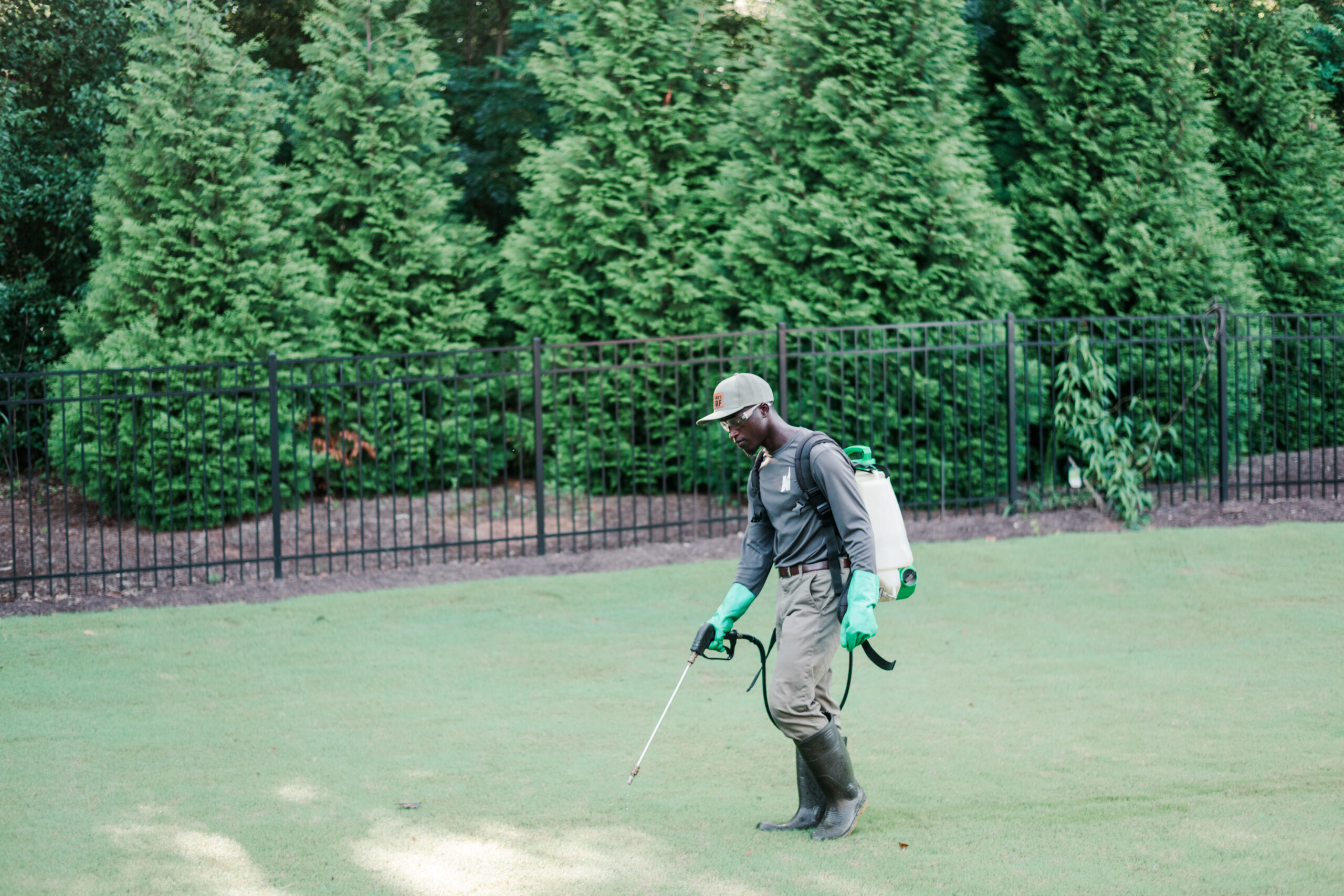Much in the same way all photocopiers are Xerox machines, or all facial tissues are Kleenex, there are a few key weeds that take center stage in Georgia resident’s minds.
Anything similar to them simply gets lumped into that weed. Grassy weeds, for instance, are typically all called crabgrass. Similarly, weeds that remotely resemble clover are often confused for clover. This is especially true of Oxalis stricta, colloquially known as Oxalis or Yellow Woodsorrel. Here is a quick breakdown on Oxalis and how to tell the difference between them and clovers from the lawn care experts at Nature’s Turf.
There are 3 primary factors that visually differentiate white clover and oxalis.
- The shape of the leaves is a dead giveaway. White clover has leaves that have a rounded shape and very mildly serrated edges. Oxalis can be immediately identified by their heart-shaped leaves. As an interesting aside, both of these species are capable of producing the kind of 4-leaf variants we used to hunt for around St. Patrick’s Day.
- Leaf coloration is another prominent feature in differentiating the two. White clover typically has a white design or spots on the individual leaves. Oxalis has no such design, but rather a dull green coloration.
- Perhaps more striking than the differences in leaf shape and coloration are the flowers by both of these species. The flowers of white clover are interesting orbs of small individual flowers. These are often bright white, but may give way to faint red or purple hues as they age. Oxalis, on the other hand, has a very simple, yellow flower with 5 simple petals.
What Makes Oxalis a Challenge?
Such is true of all weeds, they are unique and present unique challenges. Perennial weeds tend to complicate things simply because they are perennial. The pre-emergent weed control products we use to stop annuals like crabgrass from coming up in your yard work by keeping those weeds from making roots when they start to grow from seed.
Since perennial weeds like oxalis grow back from roots that already exist, they don’t necessarily have to make more, meaning focus to control existing plants shifts toward post-emergents.
There are many post-emergents from the traditional to the nouveau that offer injury and eventual control of oxalis, but it will certainly put up a fight. Its perennial nature plays a role in this challenge too. Thick root structures called rhizomes store the energy they need to sustain themselves, and that goes for regrowth after treatment from post-emergents as well.
Additional complications are created by their growth habit, and the time of year they grow and proliferate. Once mature, they slow significantly. Weed control products work by being used in some way by the plant. Slow growth means slow use of those products, and slow injury. Another factor that can cause slow injury is cold weather. Cold temps can make for lethargic biology, resulting in prolonged times to show injury, and even longer to shrivel from that injury. Fortunately, oxalis has an interesting response to weed control products, turning purple when it is injured.
Lastly, and arguably most fascinating about oxalis are its seeds and seed pods. Oxalis creates a large number of seeds, but more interesting than the number of seeds it produces is how it spreads them. While most seeds simply fall to the ground or attach themselves to a passing animal, oxalis seeds are launched (*yes LAUNCHED*) from their seed pods, and can be thrown some 16 feet.
Is there any way to control Oxalis?
Effective weed control is always the result of great teamwork. Over time, continuation of weed control and fertilization services will eradicate existing oxalis, and work through the seed bank in the ground yielding significantly fewer plants. The mowing and watering practices used in the landscape directly affect this as well.
Oxalis is dependent on light exposure to germinate. This means that it must be exposed to sunlight before new ones can grow from seed. Great mowing and watering habits that encourage turf health and density do a wonderful job of shading the soil’s surface, and encourages even greater competition if a root does get past the pre-emergent barrier.
If you have questions about oxalis, white clover, or any other weed, we’d love to chat. Our staff of turf professionals are only a call, text, or email away, and happy to address those concerns.








